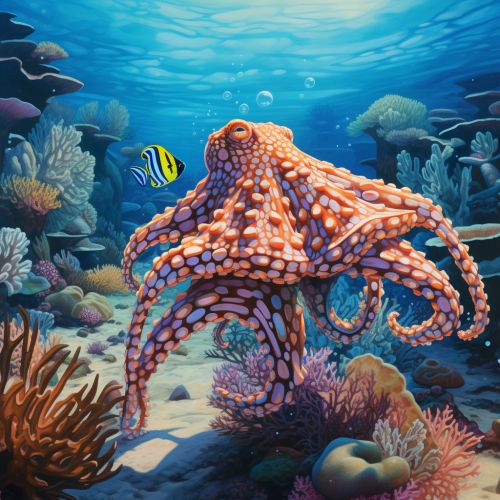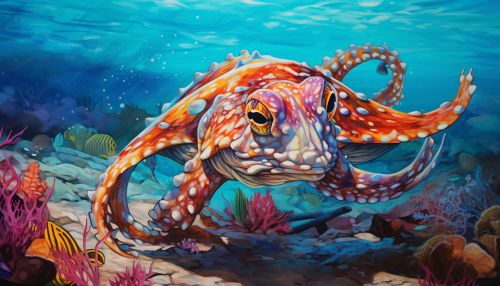Spatial Memory and Navigation in Cephalopods
Introduction
Spatial Memory is a cognitive process that enables an organism to remember different locations in its environment and the spatial relations between these locations. In the animal kingdom, cephalopods, a class of marine animals that includes octopuses, squids, and cuttlefish, have shown remarkable abilities in spatial memory and navigation. This article will delve into the intricacies of these abilities, their significance, and the underlying mechanisms that facilitate them in cephalopods.


Spatial Memory in Cephalopods
Cephalopods, particularly octopuses, have been observed to exhibit sophisticated spatial memory capabilities. They are known to navigate through complex environments, remember the locations of their dens, and even recall the locations of previously found food sources. This level of spatial memory is quite remarkable, given the fluid and ever-changing nature of their marine environments.
The spatial memory of cephalopods is primarily based on visual cues, although other sensory modalities such as tactile and chemosensory cues also play a role. Octopuses, for example, have been observed to use visual landmarks for navigation, and they can recognize and remember these landmarks over time.
Neural Mechanisms of Spatial Memory in Cephalopods
The neural basis of spatial memory in cephalopods is a subject of ongoing research. Cephalopods have the largest and most complex brains among invertebrates, with a high degree of cephalization and a well-developed nervous system. The vertical lobe of the cephalopod brain, in particular, is believed to play a crucial role in memory and learning.
Studies have shown that the vertical lobe contains a high density of long-term potentiation (LTP) sites, which are associated with memory formation and storage. LTP is a process where synaptic connections between neurons become stronger with frequent activation, leading to the formation of memory traces. This suggests that the vertical lobe might be the primary site of spatial memory storage in cephalopods.
Navigation in cephalopods is a complex process that involves the integration of various sensory inputs and the use of spatial memory. Cephalopods are known to use a range of navigational strategies, including piloting, path integration, and the use of geomagnetic cues.
Piloting involves the use of visual landmarks to navigate through the environment. Cephalopods, particularly octopuses, have been observed to use piloting extensively in their natural habitats. They can recognize and remember visual landmarks, and use these landmarks to navigate back to their dens or to find food sources.
Path integration, on the other hand, involves the use of internal cues to keep track of the animal's position relative to a starting point. This strategy is particularly useful in environments where visual landmarks are scarce or absent.
Conclusion
The abilities of spatial memory and navigation in cephalopods are remarkable and complex. They highlight the advanced cognitive capabilities of these marine animals and provide fascinating insights into the evolution of memory and navigation in the animal kingdom. Further research into these abilities and their underlying neural mechanisms could shed light on the general principles of memory and navigation, and might even have implications for understanding these processes in humans.
